Key Takeaways
- Leverage technology and AI-driven platforms like 9cv9 Job Portal to streamline recruitment and access top talent efficiently.
- Stay compliant with Canadian labor laws by understanding work permits, employee rights, and diversity hiring regulations.
- Enhance employer branding and retention through competitive salaries, strong workplace culture, and flexible work arrangements.
The job market in Canada is evolving rapidly, influenced by technological advancements, shifting workforce demographics, and changing labor laws.
As businesses compete for top talent, employers must adapt to modern hiring strategies to attract and retain skilled professionals.
Whether you are a startup looking to build a strong team or an established company aiming to expand, understanding the latest recruitment trends and best practices is essential for securing top talent in 2025.
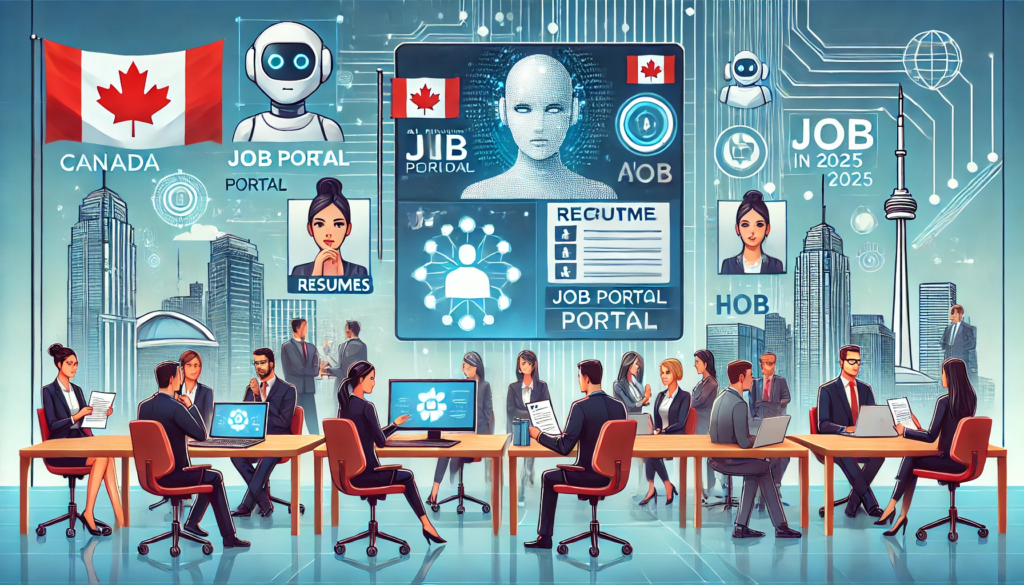
Canada’s employment landscape is shaped by several key factors, including labor shortages in certain industries, the rise of remote and hybrid work models, and advancements in artificial intelligence (AI) in recruitment.
With an increasing emphasis on diversity, equity, and inclusion (DEI), companies must also align their hiring strategies with evolving workplace expectations to attract a diverse and highly skilled workforce.
Moreover, immigration policies and work permit regulations play a critical role in expanding the talent pool, making it essential for businesses to stay informed about legal requirements when hiring international employees.
To successfully find and hire employees in Canada, companies need to leverage multiple recruitment channels, including online job boards, professional networking platforms, recruitment agencies, and employee referral programs.
Additionally, employer branding, competitive compensation packages, and a well-structured onboarding process can significantly impact talent acquisition and retention.
This comprehensive guide will explore the most effective strategies for hiring employees in Canada in 2025.
It will cover key aspects such as understanding the job market, legal and regulatory considerations, best recruitment practices, and employee retention strategies.
By implementing these insights, employers can build a strong workforce that aligns with their business goals and remains competitive in an ever-changing job market.
Before we venture further into this article, we would like to share who we are and what we do.
About 9cv9
9cv9 is a business tech startup based in Singapore and Asia, with a strong presence all over the world.
With over nine years of startup and business experience, and being highly involved in connecting with thousands of companies and startups, the 9cv9 team has listed some important learning points in this overview of How to Find and Hire Employees in Canada in 2025.
If your company needs recruitment and headhunting services to hire top-quality employees, you can use 9cv9 headhunting and recruitment services to hire top talents and candidates. Find out more here, or send over an email to [email protected].
Or just post 1 free job posting here at 9cv9 Hiring Portal in under 10 minutes.
How to Find and Hire Employees in Canada in 2025
- Understanding the Canadian Job Market in 2025
- Legal and Regulatory Considerations for Hiring in Canada
- Effective Strategies for Finding Employees in Canada
- The Hiring Process: Steps to Attract and Retain Top Talent
- Onboarding and Retaining Employees in Canada
- Challenges and Considerations in Hiring Employees in Canada
1. Understanding the Canadian Job Market in 2025
The Canadian job market is continuously evolving, shaped by economic shifts, technological advancements, demographic changes, and government policies. In 2025, employers must adapt to new workforce trends, labor shortages, and emerging job roles to remain competitive in hiring and retaining top talent. Below is a detailed breakdown of the key factors influencing Canada’s employment landscape in 2025.
Economic and Industry Trends
- Growing Sectors
- The technology industry continues to expand, with demand for software developers, cybersecurity experts, AI specialists, and data scientists at an all-time high.
- Healthcare and life sciences remain critical, with an increasing need for nurses, personal support workers, and medical researchers due to an aging population.
- The renewable energy sector is gaining momentum, with more job opportunities in green technologies, sustainable energy, and environmental engineering.
- Construction and skilled trades are experiencing a talent shortage, creating high demand for electricians, plumbers, carpenters, and civil engineers.
- Declining Sectors
- Traditional manufacturing jobs are being automated, leading to reduced demand for general labor positions while increasing opportunities in advanced manufacturing and robotics.
- Retail jobs are shifting due to the rise of e-commerce, with more businesses investing in digital sales and requiring expertise in online marketing, logistics, and AI-driven customer service.
Skills Shortages and In-Demand Job Roles
- Tech and Digital Transformation Skills
- Employers increasingly seek professionals with expertise in artificial intelligence, cybersecurity, blockchain, and cloud computing.
- The demand for data analysts and business intelligence specialists is rising as companies make data-driven decisions.
- Software development remains a core hiring focus, particularly in programming languages like Python, JavaScript, and Rust.
- Healthcare and Social Services
- With Canada’s aging population, there is a growing shortage of nurses, healthcare assistants, and elder care providers.
- Mental health professionals, such as therapists and counselors, are in higher demand due to increased awareness of mental health issues.
- Skilled Trades and Engineering
- Skilled trades professionals, including electricians, welders, and heavy equipment operators, continue to be in demand due to infrastructure projects.
- Engineers, particularly in civil, electrical, and mechanical disciplines, are needed for sustainable development and urban expansion.
Impact of Remote and Hybrid Work Trends
- Shift Towards Remote Work
- Many companies have adopted fully remote or hybrid work models, making it easier to access talent from across Canada.
- Employees increasingly prioritize work-life balance, preferring companies that offer flexible schedules and remote-friendly policies.
- Challenges of Remote Hiring
- Employers must develop strong virtual recruitment processes, including AI-powered hiring tools and structured remote onboarding programs.
- Managing a remote workforce requires enhanced communication strategies and investment in digital collaboration tools like Slack, Zoom, and Microsoft Teams.
Immigration and Workforce Diversity in 2025
- Government Policies on Work Permits and Immigration
- Canada continues to rely on skilled immigrants to fill labor shortages, particularly in STEM, healthcare, and trades.
- The Express Entry system and Provincial Nominee Programs (PNPs) have streamlined pathways for international workers to secure jobs.
- Changes in immigration policies, such as fast-tracking high-demand roles, will impact recruitment strategies for global talent.
- Diversity, Equity, and Inclusion (DEI) in Hiring
- Businesses are expected to prioritize DEI initiatives, ensuring equitable hiring practices for underrepresented groups.
- Companies implementing inclusive hiring strategies, such as blind recruitment and diverse interview panels, gain a competitive advantage in attracting top talent.
Economic and Demographic Factors Affecting Hiring
- Aging Workforce and Labor Shortages
- Many baby boomers are retiring, creating skill gaps in various industries, particularly in healthcare, manufacturing, and trades.
- Employers are focusing on upskilling younger workers and investing in training programs to close knowledge gaps.
- Rise of the Gig Economy and Contract Work
- More professionals are opting for freelance and contract-based jobs, increasing the importance of flexible hiring arrangements.
- Employers are incorporating gig workers and independent contractors into their workforce for specialized, short-term projects.
Conclusion
The Canadian job market in 2025 presents both opportunities and challenges for employers looking to hire top talent. Understanding industry trends, skills shortages, remote work shifts, immigration policies, and diversity initiatives is crucial for attracting the right candidates. Businesses that adapt to these changes, invest in technology-driven recruitment strategies, and build a strong employer brand will be best positioned for success in the competitive hiring landscape.
2. Legal and Regulatory Considerations for Hiring in Canada
Hiring employees in Canada requires a thorough understanding of the country’s legal and regulatory framework. Employers must comply with federal and provincial labor laws, employment standards, immigration policies, tax regulations, and workplace safety requirements. Failure to adhere to these laws can result in legal penalties, financial liabilities, and reputational risks. Below is a comprehensive breakdown of the key legal and regulatory considerations for hiring in Canada in 2025.
1. Employment Standards and Labor Laws
Employment laws in Canada vary by province and territory, but federal regulations apply to businesses operating under federal jurisdiction, such as banks, airlines, and telecommunications.
- Key Employment Standards
- Minimum Wage: Each province and territory sets its own minimum wage, which is adjusted periodically. Employers must ensure compliance with the latest wage regulations.
- Overtime Pay: Most provinces require overtime pay for employees working beyond the standard workweek (usually 40–44 hours). The rate is typically 1.5 times the regular hourly wage.
- Hours of Work and Breaks: Regulations govern the maximum daily and weekly working hours, as well as mandatory meal and rest breaks.
- Paid Holidays and Vacation: Employees are entitled to statutory holidays and annual vacation leavebased on tenure and jurisdiction-specific requirements.
- Termination and Severance Pay: Employers must provide adequate notice or compensation when terminating employees, with additional obligations for long-term employees or mass layoffs.
- Example: In Ontario, the minimum wage is updated annually, and failure to comply can result in fines. Employers must also follow termination notice laws, where employees with five years of service are entitled to a minimum of one week’s notice per year worked.
2. Employment Contracts and Agreements
A well-drafted employment contract protects both the employer and the employee by clearly defining the terms of employment.
- Key Elements of an Employment Contract
- Job Title and Responsibilities: Clearly outline job duties to prevent misunderstandings.
- Compensation and Benefits: Specify salary, bonuses, commissions, and additional perks like health insurance and stock options.
- Work Hours and Remote Work Policies: Define expectations for office, hybrid, or remote work arrangements.
- Termination Clauses: Include provisions for notice periods, severance, and conditions for dismissal.
- Confidentiality and Non-Compete Agreements: Protect company trade secrets and restrict employees from working with direct competitors for a specified period.
- Example: A technology startup hiring software developers should include intellectual property clauses to ensure that all software developed remains the property of the company.
3. Immigration and Work Permits for Foreign Employees
Many Canadian companies hire international talent to fill skill gaps, particularly in the tech, healthcare, and skilled trades sectors. Understanding immigration policies is crucial for hiring foreign workers.
- Work Permit Programs
- Temporary Foreign Worker Program (TFWP): Allows employers to hire international workers when no Canadian citizens or permanent residents are available. Requires a Labour Market Impact Assessment (LMIA).
- International Mobility Program (IMP): Exempts certain workers from the LMIA process, including intra-company transferees and workers under trade agreements like CUSMA (formerly NAFTA).
- Express Entry and Permanent Residency: Companies can support skilled workers through programs such as Canadian Experience Class (CEC) and Provincial Nominee Programs (PNP).
- Example: A construction company in British Columbia can hire skilled tradespeople from overseas using the BC Provincial Nominee Program (BC PNP), which fast-tracks permanent residency applications for in-demand workers.
4. Tax and Payroll Compliance
Employers in Canada must comply with payroll tax regulations, including deductions for government programs.
- Mandatory Payroll Deductions
- Canada Pension Plan (CPP): Required contributions from both employers and employees.
- Employment Insurance (EI): Provides financial support for unemployed workers, with contributions from both parties.
- Income Tax Withholding: Employers must deduct and remit employee income taxes based on federal and provincial rates.
- Workers’ Compensation Insurance: Provides benefits for employees injured on the job. Rates vary by industry and province.
- Example: A retail business in Alberta must deduct federal and provincial taxes from employee paychecks and remit them to the Canada Revenue Agency (CRA) on a regular schedule.
5. Workplace Health, Safety, and Compliance
All employers must provide a safe and healthy work environment in compliance with federal and provincial regulations.
- Key Workplace Safety Regulations
- Occupational Health and Safety (OHS) Standards: Employers must conduct risk assessments, provide safety training, and maintain compliance with Workplace Hazardous Materials Information System (WHMIS).
- Workplace Harassment and Violence Prevention: Employers are legally required to implement policies addressing workplace harassment, discrimination, and violence.
- Accommodations for Disabilities: Under the Accessible Canada Act, businesses must make reasonable accommodations for employees with disabilities.
- Example: A manufacturing company in Quebec must conduct regular safety inspections and provide protective equipment to employees handling hazardous materials.
6. Diversity, Equity, and Inclusion (DEI) Compliance
Canadian labor laws require businesses to implement fair hiring practices and avoid workplace discrimination.
- Key DEI Requirements
- Employment Equity Act: Employers must provide equal employment opportunities for women, Indigenous peoples, persons with disabilities, and visible minorities.
- Pay Equity Laws: Mandates equal pay for equal work, addressing gender and racial pay gaps.
- Human Rights Legislation: Prevents discrimination based on age, gender, ethnicity, disability, or religion.
- Example: A financial services company in Toronto must ensure fair hiring practices and regularly review compensation structures to prevent gender wage disparities.
7. Privacy Laws and Employee Data Protection
Employers must comply with privacy laws when collecting and managing employee data.
- Key Privacy Regulations
- Personal Information Protection and Electronic Documents Act (PIPEDA): Governs how businesses collect, use, and disclose employee data.
- Provincial Privacy Laws: Provinces like British Columbia, Alberta, and Quebec have their own stricter privacy laws.
- Employee Monitoring Policies: Employers must obtain consent before monitoring employee communications or workplace activities.
- Example: A marketing agency in Vancouver must ensure that all employee personal data is securely stored and not shared without explicit consent.
Conclusion
Navigating the legal and regulatory landscape for hiring in Canada in 2025 is essential for businesses to remain compliant and avoid legal risks. Employers must stay up to date with employment laws, immigration policies, tax obligations, workplace safety regulations, and DEI requirements. By implementing legally sound hiring practices, businesses can create a fair, safe, and compliant work environment while attracting top talent from both domestic and international job markets.
3. Effective Strategies for Finding Employees in Canada
Finding and hiring the right employees in Canada requires a strategic approach, leveraging modern recruitment tools, job portals, and networking channels. With the evolving job market, businesses must adopt innovative and data-driven methods to attract top talent. Below are the most effective strategies for finding employees in Canada in 2025.
1. Leveraging Online Job Portals and Recruitment Agencies
Online job portals and recruitment agencies play a crucial role in connecting employers with qualified candidates efficiently.
- Top Online Job Portals
- 9cv9 Job Portal: A leading job platform that helps businesses in Canada connect with skilled professionals across various industries. It offers AI-driven job matching, employer branding, and a streamlined recruitment process.
- Indeed Canada: One of the most widely used job boards, allowing employers to post jobs, review resumes, and reach a broad audience.
- LinkedIn Jobs: Provides access to a vast professional network, allowing businesses to target candidates with specific skills and experience.
- Glassdoor: Useful for employer branding and attracting candidates who consider company culture and employee reviews before applying.
- Workopolis and Job Bank Canada: Government-backed and private job platforms that cater to local and international job seekers.
- Partnering with Recruitment Agencies
- 9cv9 Recruitment Agency: Specializes in helping businesses find top talent through its extensive candidate database, AI-driven screening, and recruitment consulting.
- Specialized Industry Agencies: Certain industries, such as IT, healthcare, and finance, benefit from niche recruitment firms with expertise in sourcing high-demand professionals.
- Temporary and Contract Staffing Services: Many agencies provide flexible hiring solutions for seasonal, contract-based, and project-based roles.
- Example: A technology startup in Toronto looking for software developers can use 9cv9 Job Portal to post job listings while working with 9cv9 Recruitment Agency to source top AI engineers and blockchain developers.
2. Optimizing Employer Branding and Company Reputation
A strong employer brand attracts high-quality candidates and reduces hiring time.
- Creating an Attractive Employer Brand
- Showcase Company Culture: Use social media, blogs, and video testimonials to highlight workplace culture, diversity, and employee experiences.
- Offer Competitive Benefits: Promote perks such as remote work options, career development programs, and wellness initiatives.
- Engage in Corporate Social Responsibility (CSR): Candidates, especially younger professionals, are attracted to companies that support sustainability, diversity, and social causes.
- Encouraging Employee Advocacy
- Referral Programs: Offer incentives for current employees to refer qualified candidates.
- Encourage Employee Reviews: Positive feedback on platforms like Glassdoor and Indeed can enhance employer credibility.
- Example: A financial services firm in Vancouver improved its hiring success rate by showcasing its flexible work arrangements and mentorship programs through LinkedIn and Glassdoor.
3. Utilizing Social Media for Talent Acquisition
Social media is an essential tool for engaging with potential candidates and showcasing job opportunities.
- Best Social Media Platforms for Recruitment
- LinkedIn: Ideal for professional networking, job postings, and direct candidate outreach.
- Facebook Groups: Niche industry and local job-seeking groups are effective for targeted hiring.
- Twitter (X) and Instagram: Useful for sharing company culture and employer branding initiatives.
- TikTok for Recruitment: Some companies use TikTok to attract Gen Z talent through engaging job-related content.
- Example: A marketing agency in Montreal used LinkedIn’s Talent Solutions to source digital marketers, while leveraging TikTok to showcase workplace culture and attract younger candidates.
4. Tapping into Government Programs and Immigration Pathways
Hiring foreign talent is a viable solution for filling skill shortages in key industries.
- Government-Supported Hiring Programs
- Canada Job Grant: Provides funding for employee training and skills development.
- Youth Employment and Student Hiring Initiatives: Programs like the Canada Summer Jobs Programhelp businesses hire young professionals.
- Indigenous Employment Initiatives: Encourages hiring Indigenous workers through wage subsidies and training programs.
- Immigration and Work Permit Options
- Global Talent Stream (GTS): Helps Canadian employers fast-track hiring highly skilled foreign workers in tech and engineering.
- Provincial Nominee Programs (PNP): Supports businesses in hiring international workers based on specific provincial labor needs.
- Express Entry: Businesses can offer job sponsorship to skilled workers applying for permanent residency in Canada.
- Example: A healthcare provider in Calgary used the Global Talent Stream to recruit foreign-trained nurses to address labor shortages.
5. Attending Job Fairs, Networking Events, and Industry Conferences
In-person and virtual job fairs provide an opportunity to meet potential hires and strengthen industry connections.
- Best Hiring Events in Canada
- Tech Talent Canada: Focused on IT and digital industries, connecting employers with software developers, data analysts, and cybersecurity professionals.
- Toronto Career Fair & Training Expo: Covers a wide range of industries, from finance to healthcare.
- Startup and Small Business Hiring Events: Various Canadian cities host networking events for startups to connect with job seekers.
- Example: A manufacturing company in Ontario successfully filled multiple engineering positions by attending the Toronto Career Fair and partnering with local universities.
6. Engaging with Universities and Co-op Programs
Hiring recent graduates and interns through co-op programs helps companies build a pipeline of skilled employees.
- Best Ways to Partner with Universities
- On-Campus Recruitment: Organize career talks, workshops, and hackathons to engage students.
- Internship and Co-op Programs: Collaborate with universities to offer paid internships and work-study programs.
- Sponsoring Research Projects: Supporting student research initiatives can help businesses attract top talent.
- Example: A biotech firm in Vancouver partnered with the University of British Columbia (UBC) to offer co-op positions, which led to multiple full-time hires.
7. Using AI and Automation for Smarter Recruitment
Artificial intelligence (AI) and automation streamline the hiring process by reducing time-to-hire and improving candidate matching.
- AI-Powered Hiring Tools
- AI Resume Screening: Automates candidate shortlisting based on job descriptions.
- Chatbots for Pre-Screening: Engages candidates and conducts initial interviews.
- Predictive Analytics: Helps businesses forecast hiring trends and optimize recruitment strategies.
- Example: A large retail company in Quebec implemented AI-driven recruitment software to speed up the hiring process for seasonal workers.
8. Hiring Remote and Hybrid Employees
The rise of remote work has expanded talent pools, allowing businesses to hire candidates from different provinces or even internationally.
- Best Practices for Remote Hiring
- Use Virtual Interview Tools: Platforms like Zoom, Microsoft Teams, and AI-driven assessments.
- Flexible Work Policies: Clearly define hybrid or remote work expectations in job postings.
- Cloud-Based Collaboration: Ensure seamless team integration through project management tools like Slack, Asana, and Trello.
- Example: A SaaS company in Ottawa successfully recruited international software developers by offering fully remote positions.
Conclusion
Finding and hiring employees in Canada in 2025 requires a mix of traditional and modern recruitment strategies. By leveraging 9cv9 Job Portal and 9cv9 Recruitment Agency, optimizing employer branding, engaging in social media hiring, and utilizing AI-driven recruitment, businesses can effectively attract top talent. Additionally, tapping into government programs, attending job fairs, and embracing remote hiring can further enhance recruitment success. Companies that stay adaptable and proactive in their hiring strategies will gain a competitive advantage in the evolving Canadian job market.
4. The Hiring Process: Steps to Attract and Retain Top Talent
Attracting and retaining top talent in Canada requires a well-structured hiring process that incorporates modern recruitment strategies, employer branding, and employee engagement techniques. With the evolving job market, businesses must adapt to digital hiring tools, leverage AI-driven recruitment platforms, and provide compelling work environments to retain skilled professionals. Below is a detailed step-by-step guide to optimizing the hiring process in Canada in 2025.
1. Defining Hiring Needs and Creating Job Descriptions
Before starting the recruitment process, businesses must clearly outline their hiring needs and craft effective job descriptions.
- Identifying Workforce Gaps
- Conduct workforce planning to determine skill shortages and future hiring needs.
- Analyze company growth projections and department expansions.
- Evaluate current employee performance to identify areas requiring additional talent.
- Crafting Effective Job Descriptions
- Use clear and concise language outlining job responsibilities, expectations, and company values.
- Highlight required skills, qualifications, and experience levels.
- Emphasize unique benefits such as remote work, learning opportunities, and work-life balance.
- Optimize job descriptions for SEO by including relevant keywords to improve visibility on job portals like 9cv9 Job Portal, LinkedIn, and Indeed.
- Example: A tech company in Toronto struggling to attract software engineers refined its job descriptions by specifying competitive salaries, career development programs, and flexible work arrangements, resulting in a higher applicant rate.
2. Leveraging Online Job Portals and Recruitment Agencies
Using digital recruitment platforms and professional hiring services can help businesses find qualified candidates efficiently.
- Using Leading Job Portals
- 9cv9 Job Portal: AI-driven job matching, employer branding, and candidate screening for industries like IT, finance, healthcare, and engineering.
- LinkedIn Jobs: Professional networking and recruitment features for sourcing passive and active candidates.
- Indeed and Workopolis: High-traffic job boards for posting vacancies and reaching a large applicant pool.
- Glassdoor: Useful for employer branding and attracting candidates who value company culture and employee reviews.
- Partnering with Recruitment Agencies
- 9cv9 Recruitment Agency: Specializes in helping businesses find top professionals through AI-powered screening, candidate sourcing, and recruitment consulting.
- Industry-Specific Recruitment Firms: Healthcare, IT, and finance sectors benefit from specialized recruitment agencies that understand industry-specific talent demands.
- Example: A manufacturing firm in Quebec partnered with 9cv9 Recruitment Agency to find skilled technicians, reducing hiring time by 40%.
3. Screening and Shortlisting Candidates
Efficient screening ensures that only the most qualified candidates move forward in the hiring process.
- Automated Resume Screening
- Use AI-powered tools to filter resumes based on job-specific keywords, qualifications, and experience.
- Platforms like 9cv9 Job Portal use AI algorithms to rank candidates based on their suitability.
- Initial Phone or Video Interviews
- Conduct brief screening calls to assess communication skills, cultural fit, and job interest.
- Use structured questions to evaluate problem-solving abilities and work experience.
- Behavioral and Technical Assessments
- Utilize online assessment tools to test candidates on relevant skills (coding tests, case studies, or situational judgment tests).
- Behavioral assessments help measure personality traits, teamwork, and leadership potential.
- Example: A finance company in Vancouver integrated AI-powered screening tools to filter out unqualified applicants, reducing HR workload by 50%.
4. Conducting Structured Interviews
Well-planned interviews help businesses assess candidate skills, experience, and cultural fit.
- Types of Interviews
- One-on-One Interviews: Traditional method for in-depth assessment of experience and problem-solving skills.
- Panel Interviews: Multiple interviewers evaluating a candidate from different perspectives.
- Virtual Interviews: Online interviews via Zoom, Microsoft Teams, or AI-powered platforms for remote hiring.
- Behavioral Interviews: STAR (Situation, Task, Action, Result) method to assess past experiences and decision-making abilities.
- Best Practices for Effective Interviews
- Prepare structured interview questions aligned with job responsibilities.
- Create a positive candidate experience by ensuring clear communication, professionalism, and timely feedback.
- Use diversity and inclusion practices to eliminate bias in hiring decisions.
- Example: A consulting firm in Calgary implemented structured behavioral interviews, leading to improved hiring accuracy and lower turnover rates.
5. Offering Competitive Salaries and Benefits
To attract top talent, businesses must provide competitive compensation and benefits packages.
- Salary Benchmarking
- Research industry-standard salaries using platforms like Glassdoor, PayScale, and industry reports.
- Adjust compensation packages based on candidate experience and skill levels.
- Attractive Employee Benefits
- Comprehensive health insurance, retirement plans, and wellness programs.
- Remote work flexibility, paid leave policies, and childcare support.
- Learning and development opportunities, tuition reimbursement, and career progression plans.
- Example: A startup in Ottawa retained key employees by offering stock options, flexible working hours, and professional development funding.
6. Hiring and Onboarding New Employees
A smooth onboarding process enhances employee retention and engagement.
- Creating a Structured Onboarding Program
- Provide clear orientation materials and company handbooks.
- Assign mentors or onboarding buddies to help new employees integrate into the team.
- Set up technology access and training programs before the employee’s first day.
- 30-60-90 Day Plan
- First 30 Days: Introduction to company culture, role expectations, and initial training.
- Next 60 Days: Begin contributing to team projects, receive continuous feedback, and participate in career development sessions.
- After 90 Days: Full integration into the company, performance evaluation, and long-term goal setting.
- Example: A retail chain in Toronto increased retention rates by 25% after implementing a structured onboarding and mentorship program.
7. Retaining Top Talent Through Employee Engagement
Retention strategies ensure businesses maintain a stable and motivated workforce.
- Employee Recognition and Career Growth
- Offer promotions, bonuses, and performance-based incentives.
- Provide career advancement programs, leadership training, and cross-functional project opportunities.
- Workplace Flexibility and Mental Well-Being
- Hybrid and remote work policies to support work-life balance.
- Mental health programs, wellness benefits, and employee assistance initiatives.
- Example: A tech company in Montreal introduced flexible work schedules and upskilling programs, resulting in higher employee satisfaction and lower turnover rates.
8. Continuous Improvement and Feedback in Hiring
Regularly refining hiring strategies helps businesses stay competitive in the evolving job market.
- Using HR Analytics and Data Insights
- Track recruitment metrics such as time-to-hire, cost-per-hire, and employee turnover rates.
- Use feedback from candidates and hiring managers to optimize the recruitment process.
- Employer Branding Strategy Updates
- Maintain an active presence on professional networks and job boards like 9cv9 Job Portal to attract candidates.
- Improve online reviews and company ratings to enhance employer reputation.
- Example: A finance firm in Toronto used HR analytics to refine its hiring strategy, reducing recruitment costs by 30%.
Conclusion
The hiring process in Canada in 2025 requires a combination of modern recruitment platforms, AI-driven screening tools, structured interviews, and strong employer branding to attract and retain top talent. Employers should leverage 9cv9 Job Portal for job postings and 9cv9 Recruitment Agency for sourcing the best candidates. By offering competitive compensation, fostering a strong company culture, and implementing strategic retention programs, businesses can build a high-performing workforce and maintain long-term success.
5. Onboarding and Retaining Employees in Canada
Effective onboarding and retention strategies are crucial for businesses in Canada to maintain a productive, engaged, and loyal workforce. With evolving workplace trends, including remote work, AI-driven HR technologies, and increasing employee expectations, companies must adopt structured onboarding programs and retention strategies to enhance employee satisfaction and reduce turnover. Below is a comprehensive guide to onboarding and retaining employees in Canada in 2025.
1. The Importance of Onboarding and Retention
- Enhancing Employee Productivity and Engagement
- Well-structured onboarding ensures employees understand their roles, company culture, and performance expectations.
- Engaged employees contribute to business growth and innovation.
- Reducing Employee Turnover and Hiring Costs
- Companies with strong onboarding programs experience 50% higher employee retention rates.
- Retaining employees reduces hiring expenses, training costs, and productivity losses.
- Example: A tech startup in Toronto improved employee retention by 40% after implementing a structured onboarding program that included mentorship and career development plans.
Part 1: Onboarding Employees in Canada in 2025
2. Pre-Onboarding: Preparing for New Hires
A seamless pre-onboarding process ensures a smooth transition for new employees before their first day.
- Automating Administrative Tasks
- Use HR software to handle paperwork, tax forms, and employment contracts digitally.
- Provide access to employee portals for company policies, benefits, and training materials.
- Providing a Welcome Kit
- Send an introductory email with company values, team introductions, and first-week expectations.
- Include branded merchandise, office supplies, and a personalized welcome message.
- Assigning an Onboarding Buddy or Mentor
- Pair new hires with experienced employees to provide guidance and support.
- Helps in integrating into the company culture and understanding workflows faster.
- Example: A marketing agency in Vancouver introduced a digital pre-onboarding system, reducing onboarding time by 30% and improving employee satisfaction.
3. The First Week: Structured Onboarding for New Employees
A strong first-week experience helps employees feel confident and engaged in their new roles.
- Day 1: Welcome and Orientation
- Provide a company tour or virtual office walkthrough.
- Conduct an HR session on company policies, code of conduct, and employee benefits.
- Role-Specific Training and Expectations
- Clearly define job responsibilities, team structures, and key performance indicators (KPIs).
- Assign initial projects and provide training materials or courses.
- Cultural Integration Activities
- Arrange team lunches or virtual meet-and-greets with colleagues.
- Introduce company traditions, values, and diversity initiatives.
- Example: A software firm in Calgary conducted interactive onboarding workshops using virtual reality (VR), enhancing knowledge retention and employee engagement.
4. 30-60-90 Day Onboarding Plan
A structured plan helps new employees adjust, learn, and contribute effectively.
- First 30 Days: Learning Phase
- Focus on job training, mentorship, and shadowing senior employees.
- Set short-term goals and schedule weekly check-ins with managers.
- Next 60 Days: Development Phase
- Encourage independent project ownership and team collaboration.
- Offer skill development programs or e-learning courses.
- After 90 Days: Integration and Performance Review
- Conduct a formal performance evaluation and discuss career progression.
- Align employee goals with company objectives for long-term engagement.
- Example: A finance firm in Ottawa implemented a 90-day onboarding plan, leading to a 25% improvement in employee retention and job satisfaction.
5. Leveraging Technology for Onboarding
Using technology-driven onboarding enhances efficiency and engagement.
- AI-Powered Onboarding Platforms
- Automates new hire training, document processing, and employee feedback collection.
- Examples: BambooHR, Workday, and 9cv9 Job Portal’s HR solutions.
- Gamification and Interactive Training
- Uses quizzes, simulations, and leaderboards to make onboarding engaging.
- Helps new employees retain knowledge faster.
- Example: A customer service company in Montreal adopted AI-driven onboarding software, reducing new hire turnover by 35%.
Part 2: Retaining Employees in Canada in 2025
6. Competitive Compensation and Benefits
Offering attractive salaries and benefits is key to retaining top talent.
- Salary Benchmarking
- Research industry-standard salaries using platforms like Glassdoor, PayScale, and job portals such as 9cv9 Job Portal.
- Provide annual salary adjustments based on performance and market trends.
- Comprehensive Employee Benefits
- Health and Wellness: Extended healthcare, dental coverage, mental health support.
- Work-Life Balance: Paid parental leave, generous vacation policies, and remote work options.
- Retirement and Financial Benefits: Pension plans, RRSP matching, and performance bonuses.
- Example: A retail company in Toronto improved employee retention by 30% after introducing flexible benefits tailored to individual needs.
7. Creating a Positive Workplace Culture
A strong workplace culture fosters employee loyalty and satisfaction.
- Diversity, Equity, and Inclusion (DEI) Programs
- Promote inclusive hiring practices and workplace diversity initiatives.
- Establish employee resource groups (ERGs) for underrepresented groups.
- Recognition and Rewards
- Monthly and quarterly recognition programs for outstanding performance.
- Peer-to-peer recognition platforms and incentive programs.
- Flexible Work Arrangements
- Hybrid and remote work policies to support work-life balance.
- Coworking space stipends for remote employees.
- Example: A telecommunications company in British Columbia reduced turnover by 20% after introducing an employee recognition program and DEI initiatives.
8. Career Growth and Development Opportunities
Employees are more likely to stay when they see career progression opportunities.
- Training and Upskilling Programs
- Online courses, certifications, and leadership development programs.
- Partnerships with universities and online learning platforms.
- Internal Promotions and Succession Planning
- Encourage internal hiring for senior roles to boost employee motivation.
- Implement structured career pathing and mentorship programs.
- Example: A logistics firm in Edmonton improved retention rates by offering tuition reimbursement and upskilling programs for career advancement.
9. Employee Feedback and Continuous Engagement
Regular feedback and engagement strategies help improve workplace satisfaction.
- Conducting Employee Surveys
- Use pulse surveys to assess job satisfaction and engagement levels.
- Act on employee feedback to make workplace improvements.
- 1:1 Meetings and Performance Reviews
- Regular manager-employee check-ins to discuss challenges, achievements, and career goals.
- Annual performance reviews with transparent feedback and growth plans.
- Example: A healthcare organization in Winnipeg reduced attrition rates by 25% after implementing quarterly feedback sessions and professional development workshops.
Conclusion
Successful onboarding and employee retention strategies in Canada in 2025 require a combination of structured training programs, competitive compensation, strong company culture, and career development opportunities. Businesses can leverage AI-driven HR platforms, such as 9cv9 Job Portal, to enhance hiring and onboarding efficiency. By fostering an inclusive, supportive, and growth-oriented work environment, companies can significantly improve employee engagement, satisfaction, and long-term retention.
6. Challenges and Considerations in Hiring Employees in Canada
Hiring employees in Canada in 2025 presents unique challenges and considerations due to evolving labor market trends, technological advancements, regulatory changes, and shifting employee expectations. Employers must navigate these complexities to attract and retain top talent while ensuring compliance with Canadian labor laws. This section explores key challenges and strategic considerations for hiring in Canada in 2025.
1. Labor Market Challenges
1.1 Talent Shortages in Key Industries
- High Demand for Skilled Professionals
- Sectors such as technology, healthcare, engineering, and finance continue to face significant talent shortages.
- A lack of experienced candidates in fields like artificial intelligence, cybersecurity, and data science increases hiring competition.
- Impact of Aging Workforce
- A growing number of baby boomers are retiring, leading to skill gaps in industries such as manufacturing and construction.
- Companies must invest in workforce succession planning and upskilling initiatives.
- Example: A software development company in Toronto struggled to find senior AI engineers due to high demand, leading to increased reliance on international hiring and remote work solutions.
1.2 Rising Competition for Top Talent
- Competing with Global Employers
- Remote work has enabled Canadian professionals to take jobs with international companies, increasing competition for local employers.
- Businesses must offer attractive compensation, benefits, and career development opportunities to retain employees.
- Employer Branding and Recruitment Strategies
- Companies need strong employer branding to differentiate themselves from competitors.
- Utilizing platforms like 9cv9 Job Portal can help companies reach a broader talent pool and attract qualified candidates.
- Example: A Vancouver-based fintech startup improved recruitment success by offering flexible work policies and stock options to attract top-tier talent.
2. Regulatory and Legal Considerations
2.1 Compliance with Canadian Labor Laws
- Employment Standards Act (ESA) Regulations
- Employers must adhere to provincial labor laws regarding wages, working hours, overtime, and termination.
- Misclassifying employees as independent contractors can result in legal penalties.
- Workplace Safety and Health Compliance
- Employers must follow Occupational Health and Safety (OHS) regulations to ensure safe working conditions.
- Failure to comply with health and safety standards can lead to fines and lawsuits.
- Example: A manufacturing company in Alberta was fined for non-compliance with OHS regulations after failing to implement proper workplace safety measures.
2.2 Diversity, Equity, and Inclusion (DEI) Compliance
- Mandatory DEI Policies
- Canadian employers must comply with federal and provincial laws related to workplace diversity and anti-discrimination policies.
- The Employment Equity Act requires proactive efforts to recruit and promote underrepresented groups, including women, Indigenous peoples, persons with disabilities, and racial minorities.
- Preventing Workplace Discrimination
- Employers must establish clear policies and training programs to prevent workplace discrimination and harassment.
- Anonymous reporting channels and diversity training can improve workplace inclusivity.
- Example: A large corporation in Montreal faced reputational damage due to failure in enforcing diversity hiring initiatives, leading to employee dissatisfaction and turnover.
2.3 Hiring Foreign Workers and Immigration Policies
- Temporary Foreign Worker Program (TFWP) and LMIA Requirements
- Employers hiring foreign workers may need to secure a Labour Market Impact Assessment (LMIA) to prove no qualified Canadian workers are available.
- Processing times and LMIA fees can delay hiring efforts.
- Work Permits and Express Entry System
- Employers must navigate Canada’s immigration programs, including Express Entry, Global Talent Stream (GTS), and Provincial Nominee Programs (PNPs) to attract skilled foreign workers.
- Delays in visa processing can impact recruitment timelines.
- Example: A tech company in Ontario expanded its workforce by hiring AI specialists from Asia through the Global Talent Stream, reducing hiring time by 50%.
3. Compensation and Benefits Challenges
3.1 Rising Cost of Hiring and Compensation Trends
- Salary Inflation and Market Pressures
- Competitive salaries are necessary to attract top talent, but increasing wage expectations put financial strain on businesses.
- Employers must balance compensation with profitability and operational budgets.
- Comprehensive Benefits to Stay Competitive
- Companies need to offer robust benefits, including extended healthcare, flexible work arrangements, mental health support, and retirement plans.
- Organizations using 9cv9 Recruitment Agency have access to competitive compensation insights to stay ahead in salary negotiations.
- Example: A biotech firm in Ottawa introduced a profit-sharing model to retain employees, reducing turnover by 30%.
4. Recruitment and Talent Acquisition Challenges
4.1 Inefficient Hiring Processes
- Lengthy Recruitment Cycles
- Delayed hiring decisions lead to candidate dropouts, increasing the risk of losing top talent.
- Automating screening processes with AI-driven recruitment tools can improve hiring efficiency.
- Lack of Qualified Candidates
- Employers must expand talent search strategies, leveraging platforms like 9cv9 Job Portal for access to skilled job seekers.
- Employee referral programs and partnerships with universities can enhance candidate pipelines.
- Example: A marketing agency in Calgary reduced hiring times by 40% by adopting AI-powered candidate screening tools.
4.2 Adapting to Remote and Hybrid Workforces
- Remote Work Hiring Challenges
- Employers must address legal and tax implications when hiring remote employees across provinces.
- Providing necessary digital tools and cybersecurity training is essential for remote work efficiency.
- Hybrid Work and Office Space Considerations
- Some industries require a balance between remote work and in-office collaboration.
- Companies must create policies that accommodate hybrid work preferences.
- Example: A telecommunications firm in British Columbia improved retention by implementing a hybrid work policy with flexible office attendance options.
5. Workforce Retention Challenges
5.1 Employee Engagement and Job Satisfaction
- High Turnover Rates in Competitive Industries
- Retaining skilled employees requires ongoing engagement, career growth opportunities, and work-life balance initiatives.
- Employers must conduct regular employee satisfaction surveys and address concerns.
- Workplace Mental Health and Wellness Initiatives
- Investing in mental health programs, flexible PTO policies, and employee assistance programs (EAPs) can improve retention.
- Example: A finance company in Winnipeg reduced voluntary resignations by 25% by introducing structured mentorship and wellness programs.
5.2 Career Growth and Development Opportunities
- Upskilling and Reskilling Employees
- Employers must offer professional development programs to help employees stay competitive in evolving job markets.
- Training reimbursement and leadership development initiatives increase job satisfaction.
- Internal Mobility and Promotions
- Employees are more likely to stay if they see career progression opportunities.
- Structured internal hiring policies encourage long-term employee engagement.
- Example: A logistics company in Edmonton improved retention by 20% after implementing an internal promotion strategy for high-potential employees.
Conclusion
Hiring employees in Canada in 2025 presents several challenges, including talent shortages, regulatory complexities, rising hiring costs, and increased competition for skilled workers. To overcome these challenges, businesses must adopt strategic workforce planning, leverage AI-driven recruitment tools, offer competitive compensation, and create an engaging work culture.
Utilizing 9cv9 Job Portal and 9cv9 Recruitment Agency can help employers streamline the hiring process, access top talent, and navigate legal and compensation challenges effectively. By focusing on compliance, workplace flexibility, and employee development, companies can build a resilient and high-performing workforce in Canada.
Conclusion
Finding and hiring employees in Canada in 2025 requires a strategic, well-structured, and adaptive approach that aligns with evolving labor market trends, regulatory requirements, and shifting workforce expectations. Employers must proactively leverage advanced recruitment strategies, optimize talent acquisition processes, and implement long-term retention initiatives to stay competitive in an increasingly dynamic job market.
The Canadian hiring landscape is being shaped by technological advancements, demographic shifts, and evolving work models, making it essential for businesses to refine their hiring processes to attract and retain top talent effectively. Companies that prioritize innovation in recruitment, compliance with employment regulations, and a strong employer brand will be best positioned for success in 2025.
Key Takeaways for Successful Hiring in Canada in 2025
1. Leveraging Technology and AI in Recruitment
- AI-driven recruitment tools streamline candidate sourcing, resume screening, and interview scheduling.
- Applicant tracking systems (ATS) help businesses manage large volumes of applications efficiently.
- Job portals like 9cv9 provide a broad talent pool, improving hiring success rates.
2. Expanding Talent Acquisition Strategies
- Utilizing multi-channel recruitment approaches, including online job boards, social media, and networking events.
- Partnering with recruitment agencies like 9cv9 to access pre-screened and high-quality candidates.
- Implementing employee referral programs to attract talent through trusted networks.
3. Navigating Employment Regulations and Compliance
- Ensuring compliance with Canada’s labor laws, including wage standards, workplace safety, and anti-discrimination policies.
- Staying updated on immigration policies to hire skilled foreign workers through programs like Global Talent Stream and Express Entry.
- Implementing inclusive hiring practices to meet diversity, equity, and inclusion (DEI) standards.
4. Enhancing Employer Branding and Workplace Culture
- Offering competitive compensation and benefits packages to attract top talent in competitive industries.
- Building a positive employer reputation through transparent hiring practices, professional development opportunities, and employee well-being initiatives.
- Creating a strong onboarding experience to ensure seamless integration and long-term retention.
5. Adapting to Remote and Hybrid Work Trends
- Providing flexible work arrangements to attract remote and hybrid employees.
- Investing in cybersecurity and collaboration tools to support virtual teams.
- Establishing clear policies for remote work to ensure compliance and productivity.
Why Adaptability is Key for Hiring Success in 2025
The Canadian job market in 2025 is highly dynamic, competitive, and technology-driven, requiring businesses to adopt a forward-thinking and adaptable hiring approach. Companies that fail to keep up with modern recruitment trends risk losing out on top-tier talent and long-term workforce stability.
To remain competitive, employers must:
- Regularly update hiring strategies to reflect market conditions and workforce expectations.
- Invest in employee development to close skill gaps and enhance workforce capabilities.
- Stay compliant with labor laws to avoid legal risks and improve employer credibility.
- Utilize expert recruitment platforms like 9cv9 Job Portal and 9cv9 Recruitment Agency for efficient and targeted hiring.
By implementing these strategies, businesses can build a resilient and future-ready workforce, ensuring continued growth and success in Canada’s evolving employment landscape.
Final Thoughts
The key to finding and hiring employees in Canada in 2025 lies in leveraging technology, expanding recruitment channels, ensuring compliance, and prioritizing employee experience. Organizations that take a proactive and innovative approach to hiring will gain a competitive edge in attracting, engaging, and retaining top talent.
Whether you are a startup, SME, or large enterprise, optimizing your recruitment process with advanced hiring tools, strong employer branding, and strategic workforce planning will enable you to secure high-quality candidates and foster long-term business success.
For companies seeking a streamlined and effective hiring process, 9cv9 Job Portal and 9cv9 Recruitment Agencyprovide expert recruitment solutions, access to top-tier talent, and data-driven hiring strategies. By utilizing these platforms, employers can overcome hiring challenges, enhance candidate sourcing, and build a skilled workforcefor the future.
In 2025, hiring success in Canada will depend on agility, strategic planning, and a commitment to workforce excellence. By embracing the latest recruitment technologies, compliance measures, and employee engagement practices, businesses can thrive in the evolving job market and secure sustainable growth in the years to come.
If you find this article useful, why not share it with your hiring manager and C-level suite friends and also leave a nice comment below?
We, at the 9cv9 Research Team, strive to bring the latest and most meaningful data, guides, and statistics to your doorstep.
To get access to top-quality guides, click over to 9cv9 Blog.
People Also Ask
What are the best ways to find employees in Canada in 2025?
Utilize job portals like 9cv9, recruitment agencies, social media, and employee referrals. AI-driven platforms and networking events can also help attract top talent.
Which job portals are best for hiring in Canada in 2025?
Popular job portals include 9cv9 Job Portal, Indeed, LinkedIn, and Workopolis. These platforms offer advanced recruitment features to help employers find qualified candidates.
How can I attract top talent in Canada in 2025?
Offer competitive salaries, flexible work arrangements, career growth opportunities, and strong employer branding. Engaging job descriptions and a positive company culture also help.
What legal requirements must employers follow when hiring in Canada?
Employers must comply with employment standards, work permits for foreign hires, diversity hiring regulations, and provincial labor laws to ensure fair hiring practices.
How can I hire international employees in Canada?
Employers must obtain an LMIA (Labour Market Impact Assessment) or leverage employer-specific work permits. Programs like the Global Talent Stream can fast-track hiring foreign workers.
What is the average hiring time in Canada in 2025?
The hiring process typically takes 3 to 6 weeks, depending on the industry, job role, and recruitment method. Using AI-powered platforms can help speed up the process.
How do I ensure my hiring process is inclusive and diverse?
Implement bias-free recruitment strategies, use structured interviews, partner with diversity-focused job boards, and promote an inclusive workplace culture.
What is the role of recruitment agencies in hiring in Canada?
Agencies like 9cv9 Recruitment Agency help employers find top talent by sourcing, screening, and shortlisting candidates, ensuring a smooth hiring process.
How much does it cost to hire an employee in Canada?
Hiring costs vary based on job advertising, recruitment agency fees, background checks, and onboarding expenses. On average, it can range from CAD 4,000 to CAD 10,000 per hire.
What are the top recruitment trends in Canada in 2025?
Key trends include AI-driven recruitment, remote hiring, skills-based hiring, employer branding, and employee experience-focused onboarding.
How can small businesses compete for top talent in Canada?
Offer flexible work arrangements, competitive benefits, career development opportunities, and leverage digital hiring platforms like 9cv9 to attract skilled candidates.
What industries have the highest hiring demand in Canada?
Tech, healthcare, construction, finance, and e-commerce are among the top industries with the highest job demand in 2025.
How do I optimize job postings for better reach?
Use clear job titles, include relevant keywords, highlight benefits, and post on multiple job platforms like 9cv9 to maximize visibility.
What are the key soft skills employers look for in Canada?
Employers value communication, teamwork, adaptability, problem-solving, and leadership skills in candidates across industries.
Is remote hiring still popular in Canada in 2025?
Yes, remote work remains a strong hiring trend, with many companies offering hybrid and fully remote positions to attract top talent.
How do I screen candidates effectively?
Use structured interviews, skills assessments, background checks, and AI-driven recruitment tools to ensure a data-driven hiring process.
What is the best way to onboard new employees in Canada?
Provide a structured onboarding plan, mentorship programs, training resources, and regular check-ins to help new hires integrate smoothly.
How can I reduce employee turnover after hiring?
Focus on employee engagement, career development, competitive compensation, and work-life balance to improve retention rates.
What government programs support hiring in Canada?
Programs like the Canada Job Grant, Global Talent Stream, and wage subsidies help employers with hiring costs and workforce development.
What are the best recruitment tools for hiring in Canada?
AI-powered platforms, ATS (Applicant Tracking Systems), video interview tools, and job portals like 9cv9 streamline the hiring process.
How do I verify a candidate’s work eligibility in Canada?
Check the candidate’s Social Insurance Number (SIN), work permits, and legal documentation to ensure compliance with immigration laws.
How important is employer branding in hiring?
Strong employer branding attracts top candidates, boosts retention, and enhances workplace reputation, making it easier to hire skilled employees.
How do I negotiate salaries with candidates?
Research industry benchmarks, offer competitive compensation, and provide non-monetary perks such as remote work, learning opportunities, and flexible schedules.
What are the top employee benefits expected in 2025?
Employees seek health benefits, remote work options, mental health support, professional development, and work-life balance perks.
How can I streamline the hiring process in Canada?
Automate screening with AI, use recruitment software, conduct virtual interviews, and leverage job portals like 9cv9 for quick access to candidates.
What are the biggest hiring challenges in Canada in 2025?
Talent shortages, high competition, evolving labor laws, and adapting to remote work trends are key hiring challenges for employers.
What is the role of AI in recruitment?
AI enhances candidate screening, automates repetitive tasks, improves job matching, and helps predict candidate success for better hiring decisions.
How do I create a compelling job description?
Write a clear, engaging, and detailed job description with a strong company overview, role expectations, benefits, and growth opportunities.
What is the future of hiring in Canada?
Hiring in Canada will be driven by digital transformation, AI-driven recruitment, skills-based hiring, and evolving work models like remote and hybrid work.








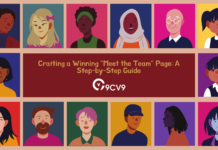







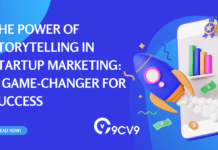




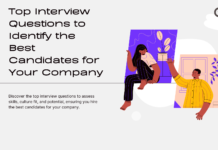



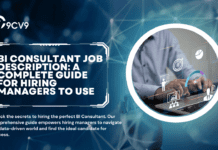


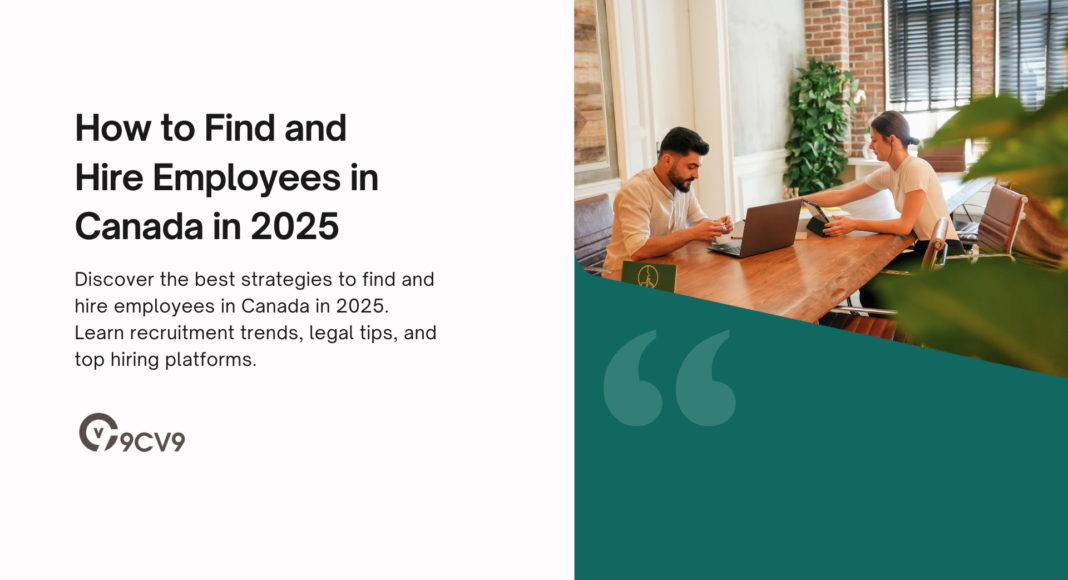


![Writing A Good CV [6 Tips To Improve Your CV] 6 Tips To Improve Your CV](https://blog.9cv9.com/wp-content/uploads/2020/06/2020-06-02-2-100x70.png)


